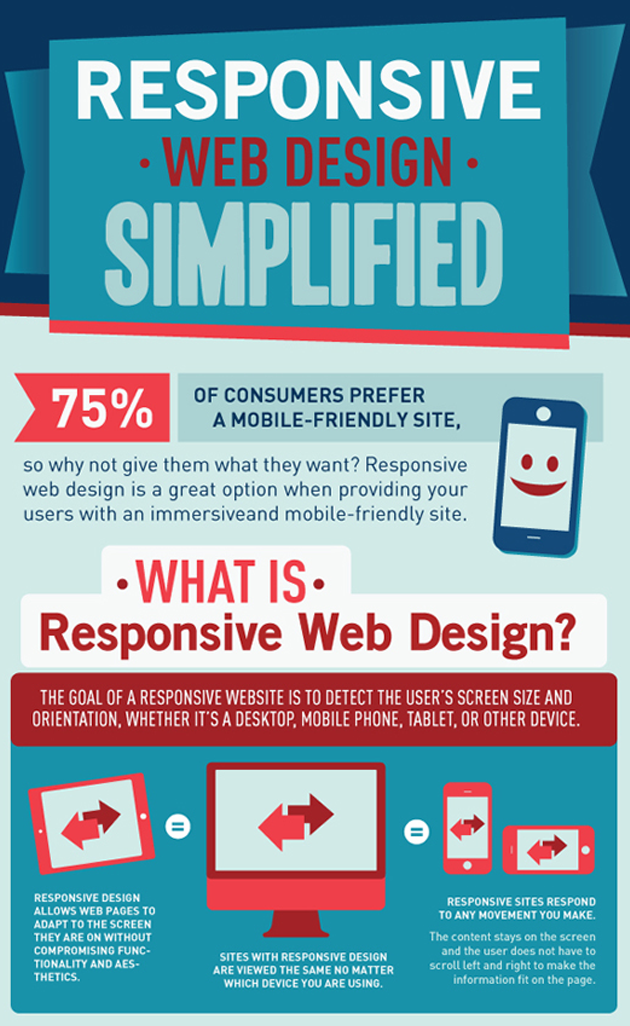The Development Of Site Design: From Past To Present
The Development Of Site Design: From Past To Present
Blog Article
Written By-Johansen Dodson
In the past, web sites were straightforward and concentrated on information. Navigation was direct, and style was for desktop computers. Currently, user experience is key. Information overviews styles for very easy navigating. Receptive layouts match different tools. Today, dark setting reduces pressure, and minimal food selections boost navigating. Interactive attributes involve customers, and bold visuals stand out. AI assimilation increases engagement. See how style has evolved to improve your online journey.
Very Early Days of Web Design
In the early days of website design, simpleness preponderated. Sites were standard, with limited colors, font styles, and formats. The emphasis got on giving information rather than fancy visuals. Customers accessed the net via slow dial-up connections, so speed and performance were key.
Navigation food selections were straightforward, usually located at the top or side of the page. Internet sites were made for desktop, as mobile surfing wasn't yet widespread. Content was king, and designers focused on simple readability over complex design aspects.
HTML was the key coding language made use of, and designers had to function within its restraints. Computer animations and interactive features were marginal contrasted to today's criteria. Websites were fixed, with little dynamic web content or individualized customer experiences.
Increase of User-Focused Design
With the advancement of internet site design, a change in the direction of user-focused layout principles has come to be increasingly popular. Today, creating internet sites that focus on user experience is crucial for involving site visitors and accomplishing company objectives. User-focused design includes recognizing the needs, choices, and actions of your target market to customize the internet site's format, content, and features accordingly.
Developers currently conduct thorough study, such as individual studies and use testing, to gather understandings and responses directly from users. This data-driven approach helps in producing intuitive navigating, clear calls-to-action, and aesthetically attractive user interfaces that reverberate with site visitors. By positioning the customer at the center of the design procedure, internet sites can deliver a more tailored and enjoyable experience.
responsive website development has also become a vital element of user-focused design, ensuring that websites are maximized for numerous gadgets and display sizes. This adaptability improves availability and functionality, accommodating the varied means users communicate with web sites today. Fundamentally, the rise of user-focused layout symbolizes a change in the direction of producing electronic experiences that prioritize the requirements and expectations of completion user.
Modern Trends in Website Design
Check out the latest fads forming web design today. One popular pattern is dark mode style, supplying a streamlined and modern look while reducing eye strain in low-light atmospheres. https://restauranttechnologynews.com/2022/03/seo-tips-and-tricks-restaurants-can-use-to-improve-their-online-search-results/ is minimal navigating, streamlining food selections and enhancing user experience by concentrating on essential elements. Integrating micro-interactions, such as animated switches or scrolling impacts, can produce a much more appealing and interactive website. Responsive style stays important, making sure smooth customer experiences throughout numerous tools. In addition, making use of bold typography and asymmetrical formats can add aesthetic rate of interest and draw attention to specific material.
Incorporating local seo specialist , like chatbots for consumer assistance or personalized suggestions, enhances customer interaction and improves procedures. Accessibility has additionally come to be a substantial pattern, with developers prioritizing inclusive layout techniques to satisfy diverse user needs. Embracing sustainability by optimizing website efficiency for rate and performance is another arising pattern in website design. Working together with customer comments and information analytics to iterate and enhance design continually is essential for staying relevant in the ever-evolving digital landscape. By welcoming these modern-day patterns, you can develop an aesthetically appealing, user-friendly internet site that reverberates with your audience.
Final thought
As you assess the development of site design from the very early days to currently, you can see how user-focused style has come to be the driving pressure behind modern trends.
Welcome the trip of adjustment and adjustment in web design, constantly maintaining the individual experience at the leading edge.
Remain current with the most up to date fads and modern technologies, and never stop advancing your strategy to produce visually stunning and straightforward sites.
Evolve, adjust, and develop - the future of web design is in your hands.
